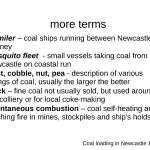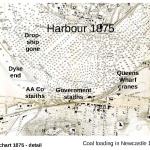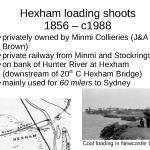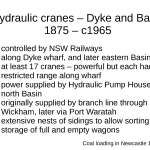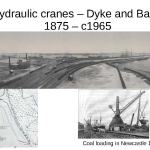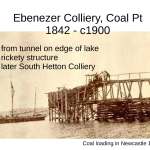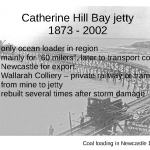
This is my personal all time favourite presentation by the late Russell Rigby. Coal Loading in Newcastle 1800 to 1900, was delivered at the Hunter Living Histories meeting on the 6 February 2017. It was held at the offices of Unwelt Australia Pty Ltd at Teralba.
Presentation Born Out of an Error
The presentation was born in an error made when describing the coal staithes that once stood on the Port of Newcastle.
A coal staithe is defined as “an elevated wharf with a chute or coal drop for loading ships with coal.”
Unaware that there were Government owned, as well as Australian Agricultural Company staithes, Russell soon set us straight.
This presentation was subsequently created to help set everyone else straight as well.
Photographs and Engravings of Coal Staithes
You can see photographs of what they once looked like, immortalised in a series of astonishing photographs from the 1870s, digitally donated by Anne Glennie.

19th Century Port Comes Alive
Russell brought the Newcastle Port of the 19th century back to life, and made all those static black and white and sepia photographs come to life as well.
He described the workings of the Port, and we began to imagine it as a living mechanical and hydraulic organism.
This “organism” was created by engineers, and powered by the Carrington Pump House.
This hydraulic power breathed “air” into its metaphorical lungs, while a cardiovascular system of rail tracks brought the coal in from the collieries and exported it out via a labyrinthine series of coal staithes and later cranes to waiting vessels.
This organism, over the years, honed to clock work precision, become the largest coal export port on Earth.
Coal Loading in Newcastle 1800-1900
by Russell Rigby (2017)
PDF Version – Coal Loading In Newcastle 1800-1900 by Russell Rigby (2017)



